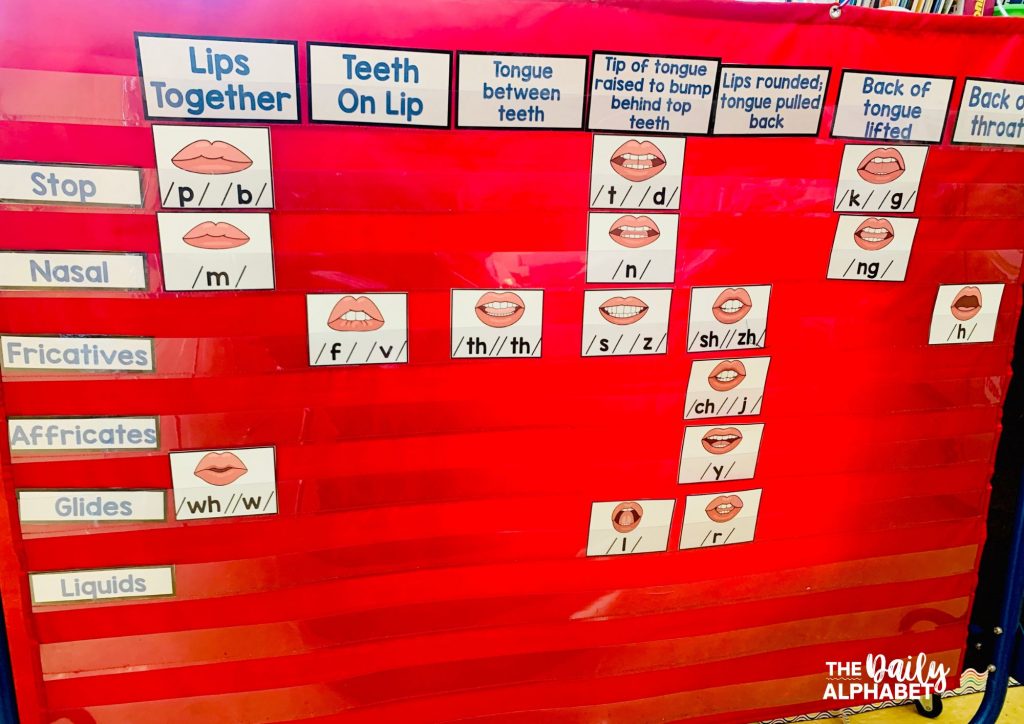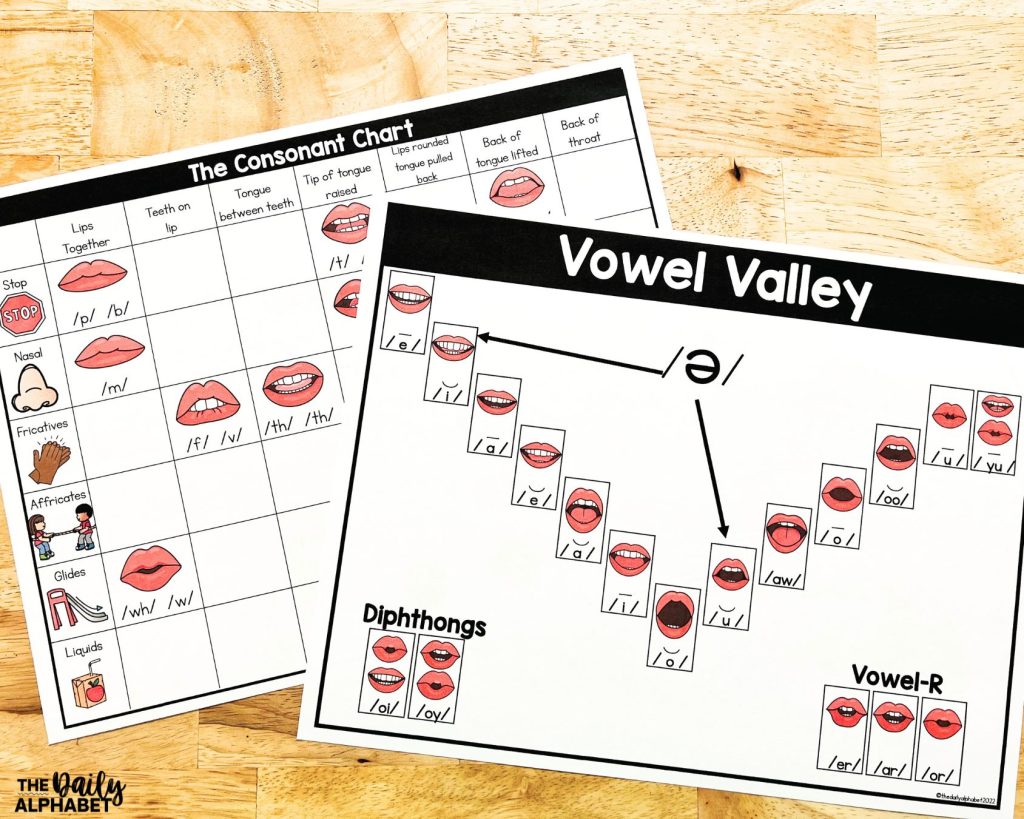
Sound walls have been sweeping across the nation recently, replacing word walls in classrooms all over. Why? This is because sound walls are an important part of the science of reading. They help students to understand how speech maps to print, and how the two work together to create meaning. Let’s take a closer look, shall we?
What exactly is a Sound Wall?
A sound wall is a helpful tool for teaching students the 44 phonemes of the English language. It is made up of two parts: a consonant chart and a vowel valley. By providing a visual representation of the relationship between speech and print, sound walls help students to see the connections between the two.
The consonant chart shows all of the possible sound combinations that can be made using English consonants. The vowel valley is a representation of the different ways that vowel sounds can be pronounced.
Each sound on the sound wall has its own symbol. These symbols are used to show how sounds relate to one another within the English language sound system, by making the phoneme-grapheme connection clear.
In addition, sound walls help to reinforce the importance of phonemic awareness, an essential skill for successful reading. By helping students to understand the science of reading, sound walls provide a valuable tool for teaching and learning.

How are Sound Walls aligned to the Science of Reading?
Sound walls fit under word recognition when it comes to the simple view of reading. If the word recognition part of Scarborough’s rope isn’t mastered, students are still in speech to print. Sound walls help students to understand how speech mapping to print works.
The Consonant Chart
The consonant chart is a tool that is used to identify the consonant phonemes of the English language. There are a total of 25 consonant phonemes in English, which are produced when the airflow from the lungs is obstructed by the lips, teeth, or tongue. This obstruction causes the consonants to be considered “closed” sounds.
The consonants are divided into seven columns and 6 rows, and they can be distinguished from each other by their place and manner of articulation. If a mouth picture has two phonemes, the first one is unvoiced, and the second one is voiced.
Place of articulation – where the sound comes from; front, middle or back of the mouth.
Manner of articulation – how the tongue, lips, and teeth are working to direct the sound through the throat and nose.

Vowel Valley
The second part of the sound wall is vowel valley. Vowel phonemes are distinguished from one another by the order of articulation, which is the starting point of vowel production.
The vowel phonemes are distinguished from one another by their place of articulation in the mouth, which can be high or low, and by the shape of the lips (rounded or ungrounded).
There are a few vowels that don’t fit in the step-by-step progression of vowel valley, which is why they sit off to themselves.
First up on the left we have the diphthongs /oi/ and /ou/. They are single vowel phonemes that glide in the middle, so the mouth position shifts. Then we have r-controlled vowels /er/, /ar/, and /or/ on the right. When a vowel is followed by /r/, the sound of the vowel changes.

Creating the Sound Wall
When you are getting ready to put your sound wall together, remember that there are two parts – the consonant chart and vowel valley. They are both required, but they do not have to be side by side or in the same area.
All of the vowel phonemes and consonant phonemes have an assigned place. Having an assigned place means that each phoneme has a specific spot on either the vowel valley or the consonant chart.
There are two ways that you can put the sound wall together.
- You can build it phoneme by phoneme as you introduce them.
- You can fully build the sound wall, and use the locks to cover each phoneme. When it is taught, then you can remove the lock to reveal its place on the sound wall.
When putting vowel valley together, I have found that it is easiest of you start at the bottom of the valley, with the short o sound. After you have that in place, it’s best to continue working your way up by adding a card one at a time on each side.
With the consonant chart, begin with the headers of the columns and rows. Then move the phonemes into place.
When you are putting your sound wall together, make sure that you consult both the vowel valley and consonant chart to ensure that you are placing the sounds in their correct location.

How can you use a sound wall in your classroom?
Sound walls can be used as scaffolding when needed. It gives educators insight into how their students are processing language by examining which phonemes come easiest for each individual learner.
By using a sound wall in the classroom, educators can provide their students with a valuable resource for understanding how sounds and letters work together to create spoken words.
I created my own sound wall and I have used it this school year, and I can’t even begin to tell you the difference it has made in my small groups. I added a few more things that I think improved my instruction when it comes to consonant and vowel phonemes.

First up we have consonant & vowel phoneme cards. These are perfect for your small groups! Just print, fold in half and glue the edges. These cards allow you to focus on specific phonemes during your small group instruction and provides some reminders for you on the back!
We also have a cheat sheet when it comes to the definitions. Those are handy to have at your fingertips..
I’ve also included a set of mini phoneme-grapheme cards that you can use whenever you need to.

There’s also some teaching slides that you can project, for when you’re teaching your students about place and manner of articulation.

Phoneme-grapheme connection practice pages for the consonant and vowel phonemes allow students to put it all together!
If you’re in search of a sound wall resource, you can take a closer look by clicking on any of the pictures or right here.
I hope this post has helped to answer any questions you may have about what a sound wall is, and why it can be helpful to your students.
Pin for later!












